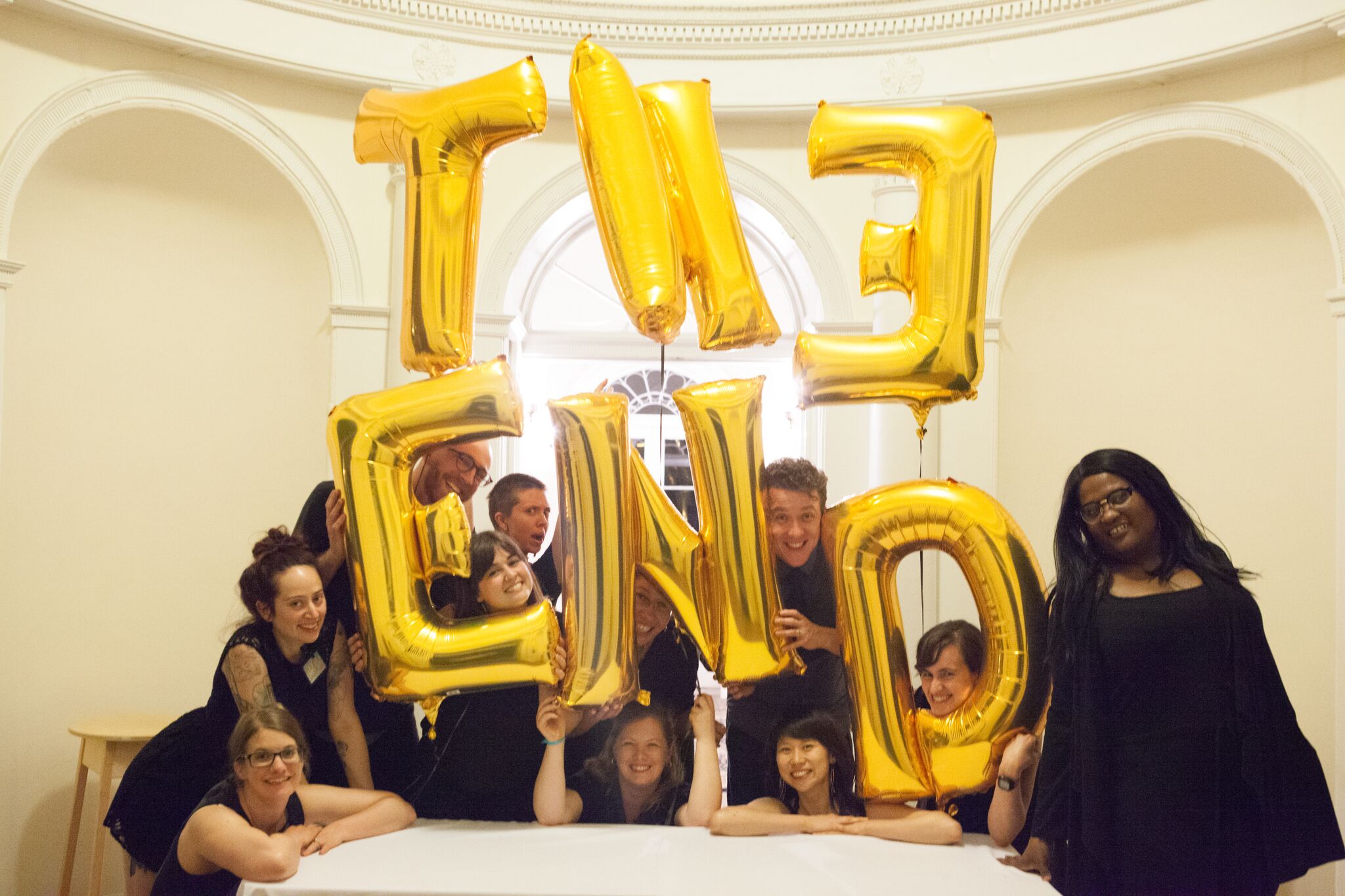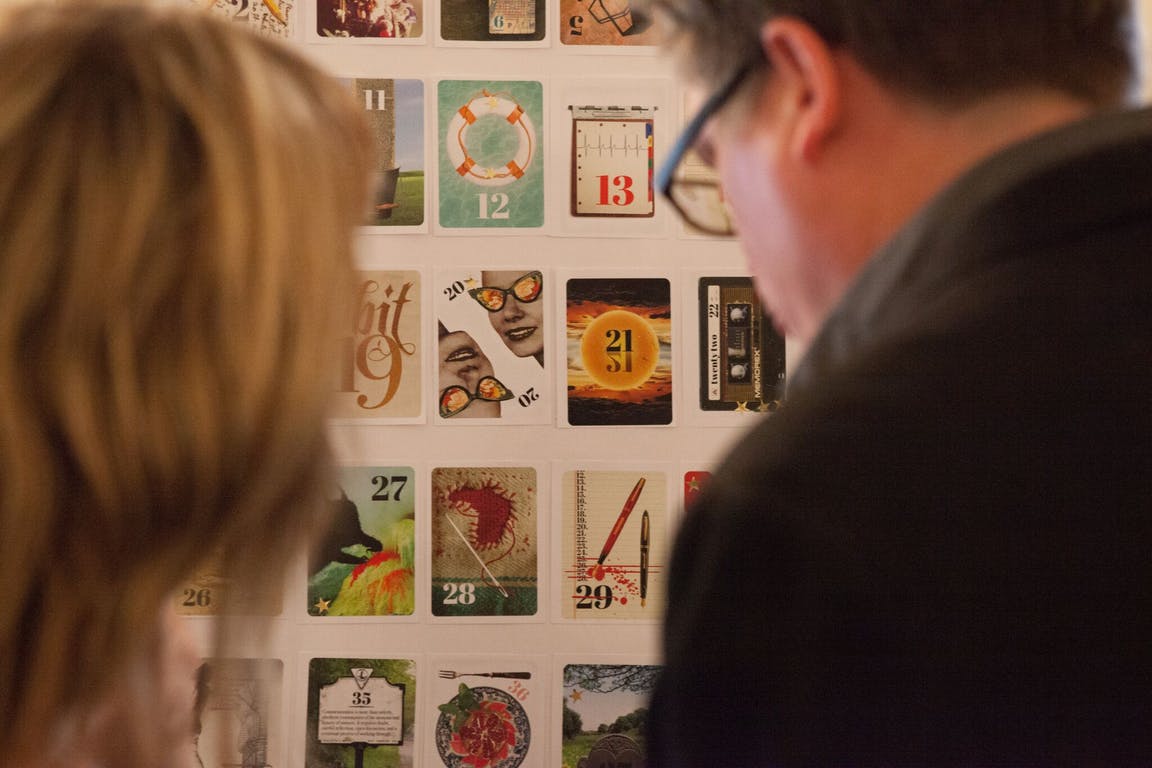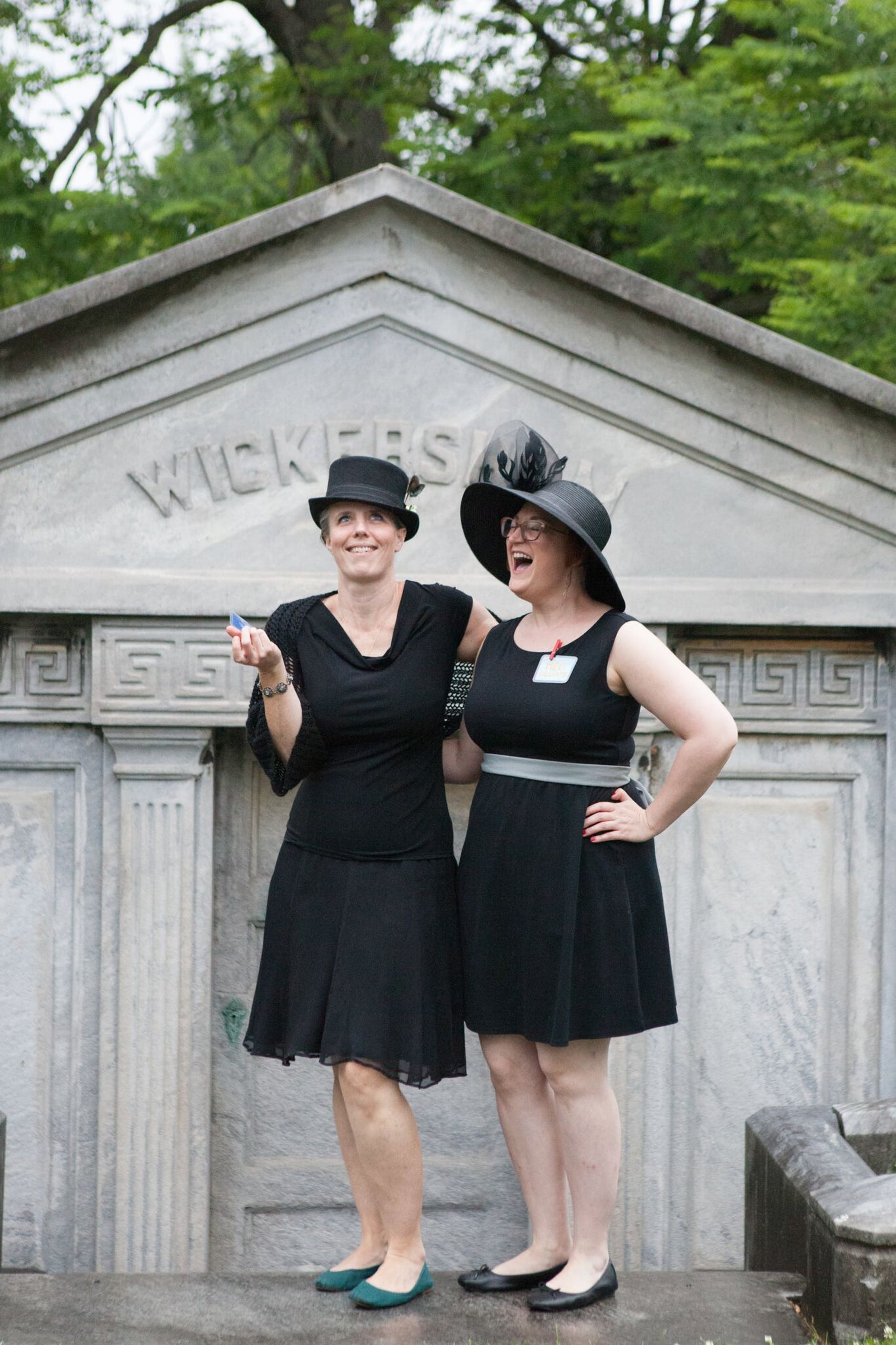
When your phone is the stage: new play takes place entirely via text message
Every morning during the usually merry month of May, I received a text message from a mysterious source asking me to draw a card. After exchanging pleasantries, this entity, named The End, would provide me with a password to enter a web portal. There, I’d find a link to a video of a New Orleans funeral, say, or to a portrait gallery of adults recreating decades-old photographs taken during their youth.
Primed to muse on the special people, places and things in my life, I was ready to pursue a quest. Maybe it’d be to imagine walking through my neighborhood with a loved one who was no longer living, or perhaps to choose a song that I’d like to listen to on the last day I was alive.
I did all these things to prepare for my imminent death. Or, at least that was the gauntlet laid down by a month-long game-meets-theater multimedia production, also called “The End” and designed by Philadelphia’s Swim Pony Performing Arts. Its goal was to encourage players to move into a closer, more comfortable (indeed, comforting) relationship with the prospect of dying. When I first heard of the project my gut, well, wrenched. Because that visceral reaction seemed to be the point, I accepted the challenge.
Prepping for The End
Mention a title called “The End” to me and two completely different rock songs come to mind. The Doors’ epic is a dolorous dirge with lyrics like: “This is the end, my only friend. The end of our elaborate plans, the end of everything that stands.” The Beatles’ tune is a bright bagatelle; it reminds us that: “In the end, the love you take is equal to the love you make.”
So, how do we regard the idea of dying? As a depressing finale, or as a meaningful flourish to a life well-lived? The End, I hoped, would help steer me toward the latter.
And that’s what Adrienne Mackey, founding artistic director of Swim Pony, intended when she conceived of the project. “I began working on this about two years ago because of my own high death anxiety,” she says. “I wanted to see how I could move from a place of minimizing regret, which sounds like fear, to acceptance, which I thought would give myself permission to live life.” She started reading books like “Staring at the Sun: Overcoming the Terror of Death.” An old episode from “This American Life” called “Shoulda Been Dead,” which traced the activities of several folks who for various reasons felt they might die soon, provided insight and inspiration.
But Mackey, a director and performance instructor who has veered from traditional theater as her career progresses, also had other ideas she wanted to tackle: ideas about the state of theater today, its audiences, and how to shake things up. “For awhile now, my work has come out of a desire to keep theater relevant,” she says. “We’ve done some productions in unusual locations, we’ve done stuff that asks the audience to more directly engage with the performers.”
With the tech-based “The End”—besides texting, the project also relied on internet applications like Google Docs and Spotify—she brought the performance to the audience, using as a jumping-off point the tropes of the game world (such as tarot-like cards and quests).
“We were intrigued by the texting component because it’s how many people consume content through their mobile devices,” says Knight Foundation Program Officer Amanda Thompson. “We want to be where people are and to support artists who are interested in reaching them there,” Initially Thompson was intrigued by the audience-building potential of bringing gamers into the performing arts fold. But as time went on, she “began to see a powerful way to connect with all kinds of people who are interested in content and in particular this issue.”

Play sends participants on a journey
Armed with a notebook and the cards, “journeyers” pursued quests as suggested by the sympathetic but elusively cool title character. Mackey formulated each quest in the same fashion: first present it within the framework of a theoretical context, and then make it real through a specific exercise to conduct or ponder upon during the day.
When I chose a card that I learned was called “you can’t take it with you,” for instance, I first read a brief passage about the sentimental value of objects. Next, I followed a link to a website about something called The Heirloom Project, then I considered my own attachment (or, really, non-attachment) to stuff and what I might like to bequeath to whom. I remembered something of my mother’s, a set of postcards from a voyage to Italy she took as a teenager during the 1940s to visit relatives.
“They’re beautiful and a treasure on their own,” I wrote to The End, “but their real significance is that they’re part of my family heritage and I have no immediate family to pass them on to.”
The End paused for a moment before responding, via text: “So it is the significance that lives in people’s memories, not the objects?”
In reality, the character of The End was embodied by seven actors who worked in tandem under the direction of Mackey. They started by greeting participants at 7:30 a.m.; when summoned, they sent journeyers off on their quests and then returned when participants were ready to reflect on those explorations. At 11:30 p.m. they signed off. Much of their texting was spontaneous, but Mackey points out that “we were careful about The End in terms of acting objectives. The End is curious about people and radically accepting, but The End has no investment other than for the player to accomplish their own goals.”
In addition to developing the lead character, Mackey researched and wrote the content for all 52 quests (one for each card), including the scripts for several guided meditations delivered via phone. Other contributors helped, of course, most visibly Maria Shaplin, the designer of the evocatively beautiful cards.
Mackey also turned to Manisha Shendge, a therapist specializing in grief and loss, for consultation on aspects of death and dying, and Emerson College’s Engagement Lab offered assistance in applying digital technology to an artistic project. In addition to receiving text messages, participants also gathered for two in-person events, including a final one at an historic cemetery.

In essence, Mackey says, “The End” turns audience members into actors. “As with traditional theater, it involves witnessing an unfolding story, experiencing emotions by ruminating, and engaging in the suspension of disbelief,” Mackey observes. “But there are also strong elements of rehearsing and practicing and role-playing. Game mechanics create a structure but they also introduce variability and control. There’s an author and curated experiences, but the audience also has a voice and impact, which they don’t have in traditional theatre.” Even the character of The End remains a “kind of corpse,” until a player activates it, she says, and “never quite materializes when you try to picture a specific entity or person.”
As participants gathered at the cemetery for the final curtain—it turned out to be simply a congenial and festive party—questions about the who or what of The End seldom, er, arose. Instead, journeyers were eager to discuss their experiences questing. “For me, a lot of this had resonance because of my phase of life,” observed Ann de Forest, a 62-year-old writer. “There’s a little more of a sense of wanting to be aware of what one does going forward—and I’m also finding myself starting to deal more frequently with the mortality of others.
“I liked the one where you walked with someone who had passed away,” she continued. “I stayed with my godmother when I first moved to Philadelphia. She died when she was exactly my age; I wanted to show her around my neighborhood. The quest where you looked for signs of death as you strolled outside was also very profound for me.”

Jenny Ruymann, 24, expressed a similar appreciation for quests that got her moving. “I have a weird relation to my phone,” she said. “I feel like it keeps me from living my life. So as the game went on, I found that I wanted to be away more and I was excited to go out and do my quests.”
As did several players, Ruymann named as her favorite quest the only one that sent players to physically interact with someone else. In that quest, which marked the project’s halfway point, journeyers entered an office to meet with a “doctor” who delivered to them the news that they should begin getting their affairs in order and start saying their goodbyes—the very stuff that many of the quests had prepared them for.
A truly unforgettable 10 minutes, this experience had very little to do with the words spoken by the actor and everything to do with the theatrics. (Spoiler alert: ominous music and disorienting effects were involved.) “I was so overwhelmed that I just sat there and cried,” said Ruymann. “But then I left the building and went to meet some friends and I felt so very happy to be alive.”

Recent Content
-
Artsarticle ·
-
Artsarticle ·
-
Artsarticle ·

